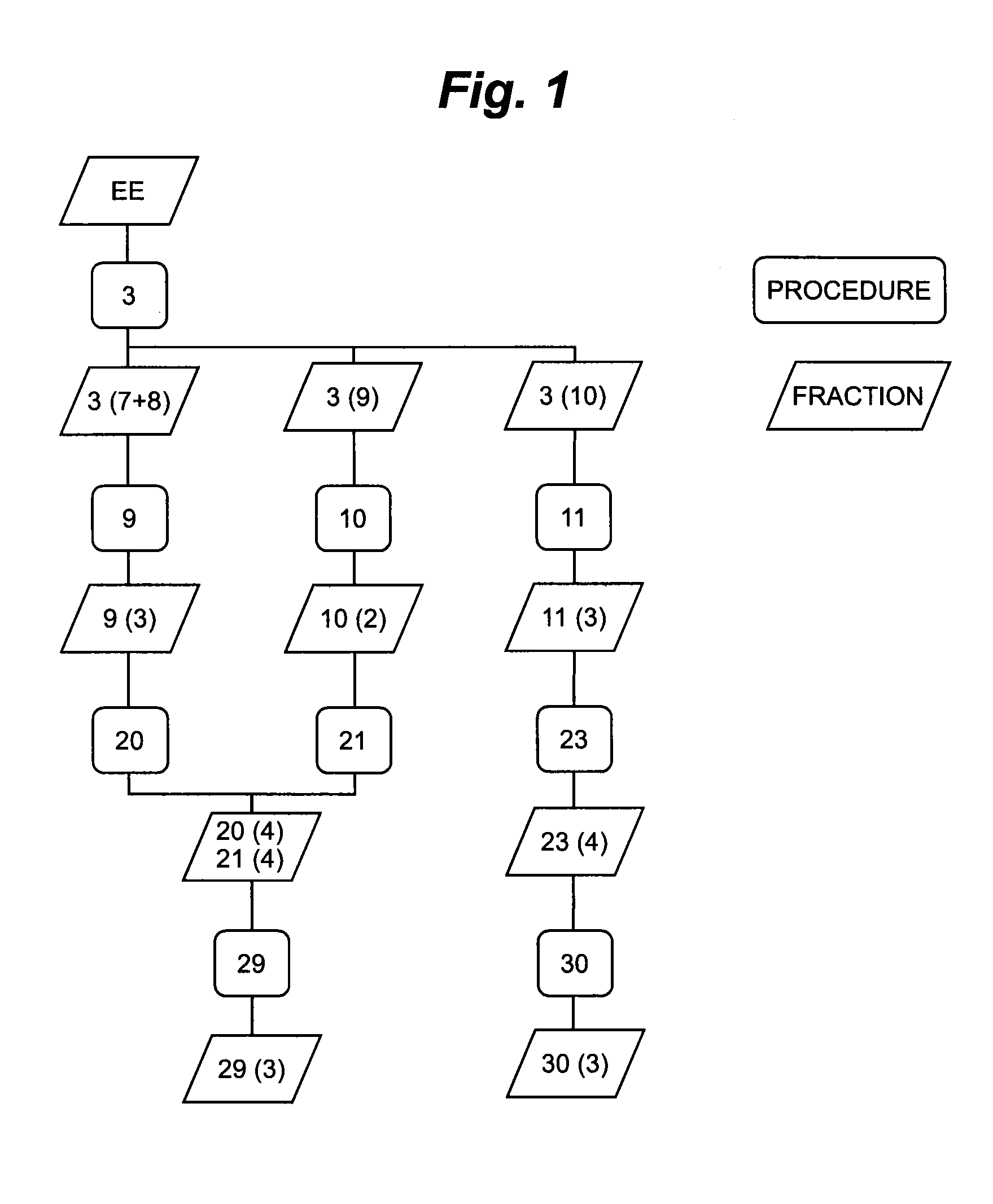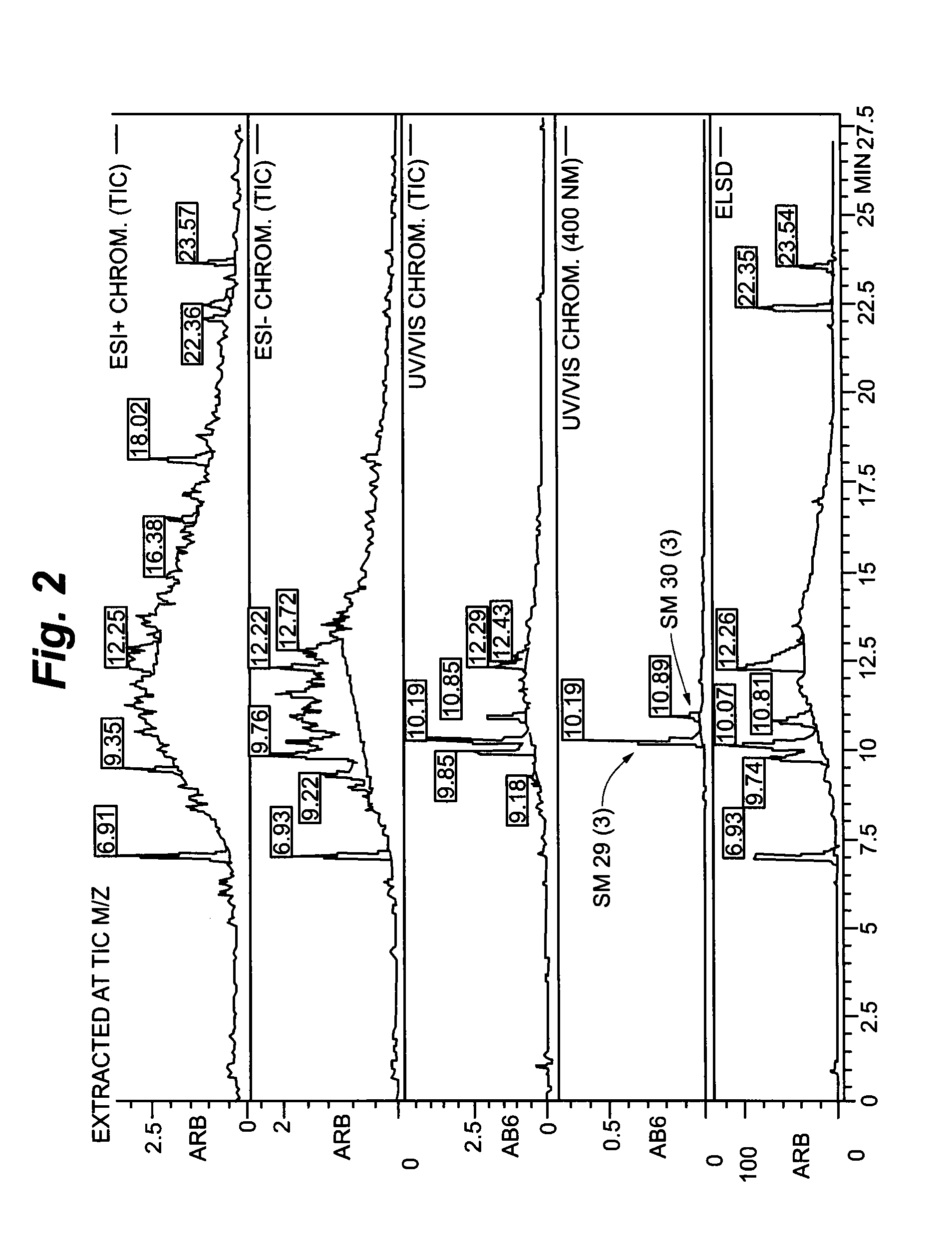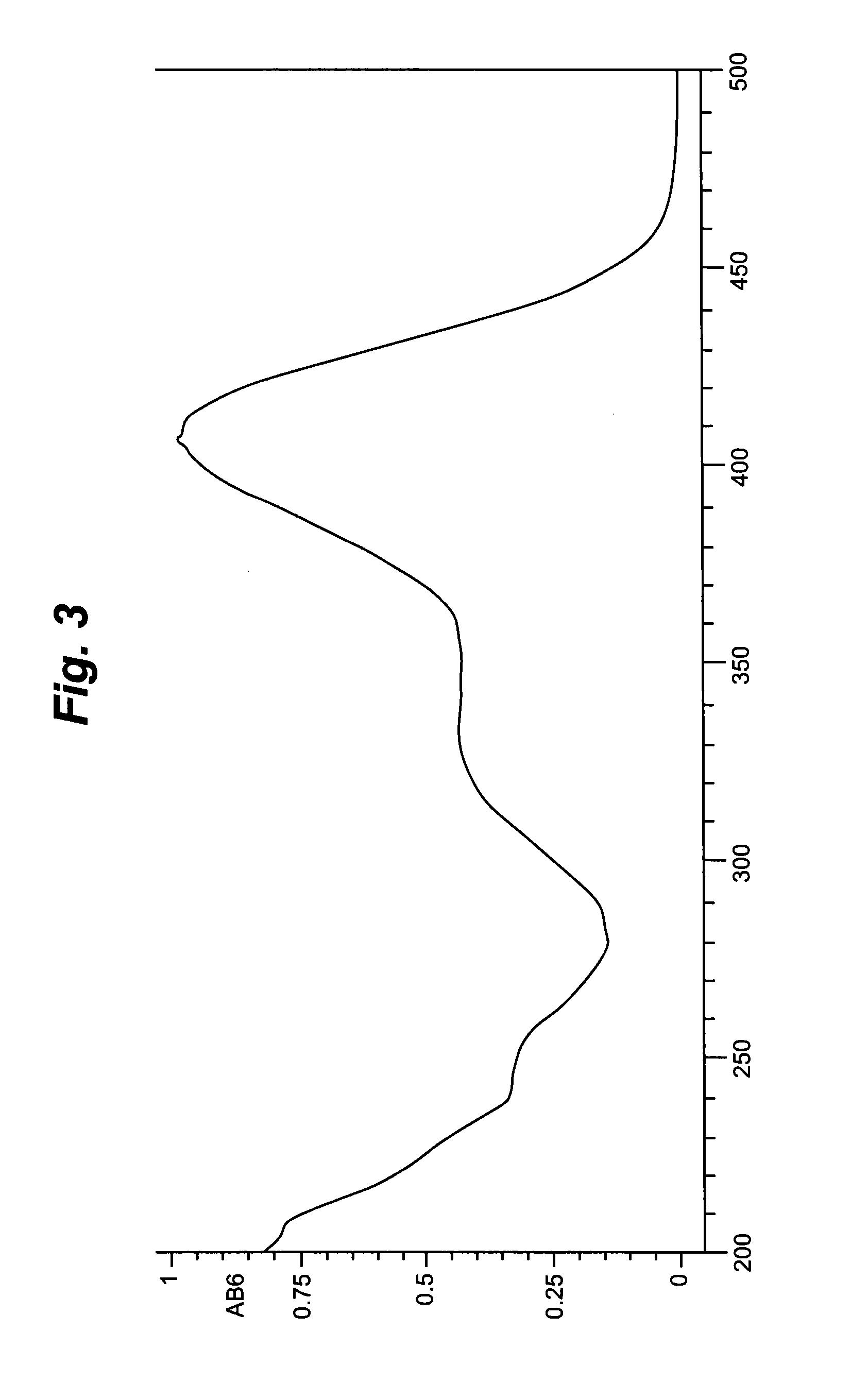Aurones as estrogen receptor modulators and their use in sex hormone dependent diseases
a technology of estrogen receptor and estrogen receptor, applied in the field of urones, can solve the problem of difficult isolation of proteins
- Summary
- Abstract
- Description
- Claims
- Application Information
AI Technical Summary
Benefits of technology
Problems solved by technology
Method used
Image
Examples
example 1
Preparation of Crude Extracts
[0142]1960 g of Smilax myosotiflora roots (SM) were ground into a powder using a lab mill and afterwards extracted at room temperature with 4000 ml 95% Ethanol twice by using ultrasonic. The solution was separated from the remaining material and concentrated under reduced pressure. The remaining water phase was added with water to a final volume of 400 ml and subsequently extracted with n-heptane and Ethyl acetate by liquid / liquid separation.
[0143]The n-heptane extract (SM 1 (1) was dried (Na2SO4) and the solvent evaporated under reduced pressure. The remaining water phase was extracted with Ethyl acetate for three times. The three Ethyl acetate extracts were combined (SM 1 (2)), dried (Na2SO4) and the solvent evaporated under reduced pressure. The remaining water phase (SM 1 (3)) was also evaporated under reduced pressure and the amounts for the three crude extracts were determined:
PlantSM-NoPhasesAmountS. myosotifloraSM 1 (1)n-Heptane4.8 gS. myosotiflo...
example 2
Preparation of Pure Compounds
[0144]The initial separation steps were performed as MPLC (procedure 3, 9 and 10) separations on reverse phase material (Macherey & Nagel, Dueren, Germany). For the separation of the single compounds in preparative scale a HPLC-setup was used comprising reverse phase separation columns (all provided by Macherey & Nagel, Dueren, Germany). The gradients for elution were chosen according to the separation problem. Generally the systems were based on Water / Acetonitrile mixtures. UV-Signals were detected at 210 nm & 254 nm. Every fraction was dried by using a vacuum concentrator and the yield was determined.
[0145]For the control of every single fractionation step the resulting fractions were analysed by HPLC-UV-ELSD.
FIG. 1: Isolation Procedure
[0146]
TABLE 2History of isolationConditions of separationProduct ofretention timeProcedureStartingSolvent A: H2O + 0.1% TFAseparationperiod [min],numberFraction(s)Solvent B: Acetonitrile + 0.1% TFAstepyields [mg]3SM 1 (2...
example 3
Preparation of Enriched Extracts
[0151]20 g of Smilax myosotiflora (SM) were ground into a powder using a lab mill (Retsch ZM200, Haan, Germany) and afterwards extracted for 45 min at 40° C. with 50 ml of 75% ethanol in water (v / v) using ultrasonic treatment. Before the water was mixed with the ethanol for the extraction process, the pH value of the water was adjusted to pH 2 by addition of 2M hydrochloric acid. The final pH was checked either with indicator paper (strips: Fisherbrand pH 0-14) and with a pH-meter (WTW pH330).
[0152]The extract solution was separated from the remaining material by filtration and the filtrate was concentrated under reduced pressure using a rotary evaporator (max. 40° C. bath temperature; max. 15 mbar; Büchi, Essen, Germany) in order to remove the organic solvent. For enrichment of aurones, the remaining water phase was subjected to further liquid / liquid separation steps.
First Liquid / Liquid Enrichment Step:
[0153]Subsequently the remaining water phase was...
PUM
| Property | Measurement | Unit |
|---|---|---|
| pH | aaaaa | aaaaa |
| pH | aaaaa | aaaaa |
| pH | aaaaa | aaaaa |
Abstract
Description
Claims
Application Information
 Login to View More
Login to View More - R&D
- Intellectual Property
- Life Sciences
- Materials
- Tech Scout
- Unparalleled Data Quality
- Higher Quality Content
- 60% Fewer Hallucinations
Browse by: Latest US Patents, China's latest patents, Technical Efficacy Thesaurus, Application Domain, Technology Topic, Popular Technical Reports.
© 2025 PatSnap. All rights reserved.Legal|Privacy policy|Modern Slavery Act Transparency Statement|Sitemap|About US| Contact US: help@patsnap.com



